Friday, September 8, 2023
Jumping off Library Shelves: A Book of Poems - edited by Lee Bennett Hopkins
Friday, April 29, 2022
Pura's Cuentos: How Pura Belpré Resphaped Libraries with her Stories
Pura knows, too, that stories that are not written down can be just as exciting as stories in books, and that stories in all languages should be told. Everyone has stories to tell and hearing other peoples' stories will make us all richer.
Written primarily in English there is Spanish vocabulary sprinkled throughout. A story for all about stories for all.
See also Sembrando historias and The Storyteller's Candle/La velita de los cuentos.
Saturday, August 28, 2021
A Ride to Remember: A Civil Rights Story - by Sharon Langley and Amy Nathan
When I was very young my family and I enjoyed visits to Gwynn Oak Amusement Park in Baltimore, Maryland. Hurricane Agnes destroyed the park in 1972 and it was not rebuilt. Rather than an amusement park, it now is a park of the type one might go for a picnic, or to fly a kite.
For a long time, black and white kids couldn't do many things together. They couldn't go to the same schools or to the same restaurants and libraries or even sit together at the movies. It was the law."Why didn't somebody do something about those kinds of laws?" I asked."They did," said Mama."We did," said Daddy.Many people - both blacks and whites - knew that segregation was unfair and just plain wrong.Some people said, Just wait. Times will change.But others said, Why wait? What's wrong with now? They held protests at restaurants, stores, and movie theaters. They tried to get officials and courts to make new laws to create a better city - a place that would welcome and include all people.By the time I was born, some unfair laws had changed in Baltimore. Kids could go to the same schools and libraries, restaurants, and some movie theaters, too - no matter the color of their skin. "But the amusement park just wouldn't budge," said Daddy.
Tuesday, July 20, 2021
Miss Moore Thought Otherwise: How Anne Carroll Moore Created Libraries for Children
At the turn of the 20th century a young woman named Anne Carroll Moore enrolled in library school and got a job at the Pratt Free Library in New York City. When Moore was growing up children were restricted from using libraries. "People didn't think reading was very important for children - especially not girls." However, Miss Moore thought otherwise. After she was put in charge of all of the children's sections in New York City's thirty-six branches Moore was tasked with designing the Children's room at the new grand library that was to be built at Fifth Avenue and Forty-Second Street. The Children's room was designed especially with children in mind with special furniture, bright colors, and artwork and "new children's books in many languages". Once the room was built music programs, author talks, and other special events kept the children coming back. Her ideas have been adopted in libraries around the world.
A beautifully illustrated work.
Thursday, April 29, 2021
Digging for Words: José Alberto Gutiérrez and the Library he Built - by Angela Burke Kunkel
¡Feliz Día de los niños/Día de los libros (Children's Book Day - a.k.a Día)! Each year on April 30 librarians and educators celebrate diversity in children's books. This year I celebrated by reading Kunkle's book about a trash collector in Bogotá, Colombia who started a library with books that had been thrown away. The book is also available in Spanish (which I also read) as Rescatando palabras. An excellent reminder that one person's trash is another one's treasure.
Wednesday, April 7, 2021
Ready to Fly: How Sylvia Townsend Became the Bookmobile Ballerina - by Lea Lyon and A. LaFaye
This week is National Library Week and today is National Bookmobile Day. Ready to Fly tells the story of Sylvia Townsend who grew up in a segregated America in the 1950s. She desperately wanted to take ballet lessons, but her family could not afford them so when the bookmobile rolls into her town she asks the librarian to help her find books on ballet. She checks out new books each time the bookmobile comes and helps the other girls in her neighborhood to learn ballet too. Young Sylvia learns to dance so well that a teacher offers to pay for her ballet lessons. However, her dreams are almost crushed when she is denied a place in the "whites only" classes. Ready to give up she is given another chance to take classes when she and her friends perform in the school talent show and learn that a famous dance instructor was in the audience.
Sunday, September 1, 2019
Richard Wright and the Library Card - by William Miller
Growing up in the segregated south young Richard Wright had limited educational opportunities. Neither was he able to use the library as it was open for whites only. As a young man he left his home in Mississippi and moved to Memphis, Tennessee. In Memphis he asked a white co-worker, Jim Falk, to help him to get books from the library. Wright took Falk's card to the library and told the librarian he was checking out books for Mr. Falk who was too busy to come himself. When further questioned by the librarian Wright insisted that he couldn't be checking out the books for himself because he couldn't even read. Once the librarian believed this lie Wright was able to check out any book he liked.
Richard Wright's love of reading ultimately inspired him to become a writer himself.
Wednesday, May 1, 2019
Sembrando historias: Pura Belpre: bibliotecaria y narradora de cuentos - por Anika Aldamuy Denise
This book is available in English as Planting Stories: The Life of Librarian and Storyteller Pura Belpré.
See also The Storyteller's Candle/La velita de los cuentos.
Wednesday, January 9, 2019
Schomburg: The Man Who Built a Library - by Carole Boston Weatherford
Going to elementary school in the 1970s meant that for one week in February each year we would celebrate Black History. It seemed that there were only two people worthy of recognition whom we would study each year: George Washington Carver and Benjamin Banneker (the latter was especially important to us because he was from Baltimore County Maryland, where my school was located). It did not occur to me that there might be more to history than what we were taught. Women (neither black nor white) were barely mentioned in any kind of historical context.
Even as Black History Week expanded to Black History Month there was little discussion of the contributions of those other than white men in building our country. We did discuss slavery, but recognition of contributions of individuals of color were rare.
Growing up in Puerto Rico in the late 19th century Arturo Schomburg was explicitly taught that "Africa's sons and daughters had no history, no heroes worth noting". A lover of books and reading, Schomburg set out to find the history that he knew was there. Like me he learned about Benjamin Banneker. Unlike me, however, he learned about a scholar whereas I simply learned of a native son. I'm not even sure I knew why he was famous beyond the fact that he had been a free black man during a time of slavery. Learning about Banneker began a lifelong quest for Schomburg to find out all he could about African Americans. His passion lead him to poet Phillis Wheatley, abolitionist Frederick Douglass, and whaler Paul Cuffee. He also found some surprises about famous people who were descendants of Africans, among them naturalist John James Audubon, author Alexandre Dumas, and composer Ludwig van Beethoven. He collected all he could and soon had an enormous selection of literature.
A true mover and shaker of the Harlem Renaissance he rubbed elbows with W.E.B. DuBois, and Booker T. Washington. His vast collection of literature by Black authors and about Black history and was purchased by the Carnegie Corporation in 1926 and donated to the New York Public Library.
If Harlem was the heart of African-American culture, 135th Street branch of the New York Public Library was the mind. If the library were a university, its alumni would include the Harlem Renaissance figures who lost themselves amid its stacks and wrote in a quiet room downstairs. Schomburg's collection...would become the cornerstone of the Division of Negro History Literature and Prints.
It included more than five thousand books, several thousand pamphlets, plus priceless prints and papers.He went on to found the Fisk University Library's Negro Collection in 1931, and then returned to the 135th Street branch of the New York Public Library where
Arturo became the guardian of his collection. His peculiar method of shelving books arranged them by size and color, like a bouquet. In fact, he fired a new librarian for using the standard Dewey Decimal System.Any librarian can tell an anecdote about a patron who couldn't remember the title or author of the book they wanted, but they knew the color of the cover, so we won't necessarily shake our heads at Schomburg's methods. The Dewey Decimal System has plenty of drawbacks, too.
Beyond demonstrating the importance of libraries, this work also shows the importance of books as "windows and mirrors" on multiple levels.
Wednesday, October 10, 2018
Pasando páginas: La historia de mi vida - por Sonia Sotomayor
los libros se convirtieron en el salvavidas que me ayudaba a mantener la cabeza fuera del agua.
(the books became a lifesaver that helped me to keep my head above water).On one of the final pages of the book Sotomayor eloquently reminds us that
Los libros son llaves que desvelan las sabiduría del ayer y abren la puerta del mañana.
(Books are the keys that uncover yesterday's knowledge and open tomorrow's door).This book is written in Spanish, although an English version (Turning Pages) is available.
Wednesday, September 26, 2018
Soñadores - by Yuyi Morales
Morales describes how disoriented she felt coming to a new place not knowing the language or the customs. And then she discovered the library
un lugar que nunca antes habíamos visto. Misterioso. Fantástico. Incréible. Sorprendente. Inimaginable.
a place that we had never seen. Mysterious. Fantastic. Incredible. Surprising. Unimaginable.She tells of the excitement of finding books, and learning to read...and dreaming.
I read this in Spanish. It is also available in an English version (Dreamers).
Monday, June 25, 2018
Sonia Sotomayor: A Judge Grows in the Bronx=Sonia Sotomayor: la juez que creció en el Bronx - by Jonah Winter
If there is one thing I love more than a "library" book, it's a bilingual library book! Beautifully illustrated by Edel Rodriguez this biography of Supreme Court Justice Sonia Sotomayor recounts her life growing up in the public housing projects of New York, to her acceptance at Princeton University, and on to becoming a federal judge, and ultimately her nomination and confirmation onto the Nation's highest court. The book is written in parallel English and Spanish text, and of course mentions the importance of libraries (twice!) in Sotomayor's journey to the Supreme Court. The Author's Note on the back cover provides some additional information about Sotomayor, including her birthday - June 25, 1954. Since I happened read this book only a few days before her 64th birthday I decided to publish this post to coincide with it. Happy Birthday Sonia!
Sunday, April 30, 2017
The Storyteller's Candle/La velita de los cuentos - by/por Lucia González
¡Feliz Día de los niños / Día de los libros! Children's Day/Book Day (or more simply Día) is celebrated every year on April 30 to celebrate multicultural books for children and to encourage literacy. The celebration was started in 1996 by children's author Pat Mora whose work I have written about before (see my previous posts about Pat Mora and Día here and here).
This year in honor of Día I read a bilingual book about a bilingual librarian, Pura Belpré, the first Latina librarian in New York City. The Storyteller's Candle/La velita de los cuentos tells the story of how those who migrated to Manhattan's Barrio from Puerto Rico during the Great Depression found a welcoming library when they discovered that a Spanish-speaking librarian had been hired. Belpré made clear the message that libraries were for everyone by not only ensuring that reading materials in English and Spanish were available to the new arrivals, she also planned story hours, and celebrations that honored their language and traditions.The beautiful illustrations enhance this story about the joy and warmth of family and community.
Belpré's memory is honored each year with the awarding of the Pura Belpré Award to a Latinx author and illustrator "whose book best portrays, affirms, and celebrates the Latino cultural experience in an outstanding work of literature for children and youth."
Tuesday, April 11, 2017
Hands Around the Library: Protecting Egypt's Treasured Books - by Susan L. Roth and Karen Leggett Abouraya
The ancient library of Alexandria, Egypt (Biblioteca Alexandrina) stood from 300 BCE to 400 CE. There are various legends as to what happened to this "center where great thinkers, scientists, mathematicians, and poets [came] to study and share ideas". We do know that it was burned either intentionally or by accident and today, not far from where the original library was located, a new library made of granite and opened in 2002, stands in its place.
In early 2011 protesters in Egypt succeeded in their call for the resignation of President Hosni Mubarak. The eighteen days of protest were violent and the new library was threatened. The director of the Library, Dr. Ismail Serageldin, closed the library and feared that it would be destroyed.
"The Library has no gates that can be locked", he called out. "The doors are all glass. There is nothing that prevents anybody from destroying this building with all its treasures, except the will of the people."And the will of the people prevailed as crowds of students, library workers, and other demonstrators, surrounded the library and held hands to protect it from the devastation and so "the library still stands today holding all of our stories."
This children's book is beautifully illustrated with collages by co-author Susan Roth.
A perfect story for National Library Week about the breadth and depth of love a society can have for its library.
Wednesday, April 13, 2016
My Librarian is a Camel - by Margriet Ruurs
I like to do special posts for National Bookmobile Day. I haven't been to a bookmobile in a long time, but I have such fond memories of going to the Baltimore County Public Library bookmobile when I was young. Although we often went to the branch library in Catonsville, I was always enchanted by the library bus.
Ruurs' book takes readers on a journey around the world, to 13 countries on six continents, where library services are delivered in unexpected ways. From libraries on wheels (including a wheelbarrow on at the Blackpool beach in England) and boats, horses, elephants, and (of course) camels the book demonstrates a universal love of books and reading. As explained by a the librarian in the blue truck library in Azerbaijan "the mobile library is as important as air or water." Or, as a young patron of the Storyteller bus in Pakistan enthuses "This bus is magic!"
Volunteers from Hope Worldwide may get the prize for toughest book delivery
They begin their journey in a four-by-four truck, on a road cut into the steep hillside. After a long bumpy ride they eventually come to a village called Mogi-agi, which means "up-and-down road,"...but the volunteers aren't done yet. They still have to reach a further destination deeper into the jungle: the village of Amia. They ford a river in their truck and drive until they can go no farther. Then they unload the boxes of books to take them to the small villages in the highlands. From there they must walk for four hours, up the pass and over several ridges, crossing log bridges while carrying the boxes of books on their shoulders.They are rewarded when they reach Amia and "young people come running to meet them...[who] gratefully read their books and look forward to the next supply!"
Tuesday, April 12, 2016
Librarians A to Z - by Jean Johnson (in honor of National LibraryWorkers Day)
Tuesday, September 29, 2015
Harry Potter and the Order of the Phoenix (for Banned Books Week)
I posted about the first Harry Potter book four years ago for Banned Books Week. Since then I have re-read one book each year, and posted in honor of Harry's birthday on July 31. I missed his birthday this year, but book five seems more appropriate for Banned Books Week, as it features a case of censorship.
Of course all the students then set out to read the issue of The Quibbler that contained the interview with Harry Potter.By Order ofThe High Inquisitor of HogwartsAny student found to be in possession of the magazine The Quibbler will be expelled.
The above is in accordance with Educational Decree Number Twenty-seven.Signed:Dolores Jane UmbridgeHigh Inquisitor
Meanwhile Professor Umbridge was stalking the school, stopping students at random and demanding that they turn out their pockets. Harry knew she was looking for copies of The Quibbler, but the students were several steps ahead of her. The pages carrying Harry's interview had been bewitched to resemble extracts from textbooks if anyone but themselves read it, or else wiped magically blank until they wanted to peruse it again. Soon it seemed that every person in the school had read it.In a bit of meta-censorship, Educational Decree number 26 banned teachers from "giving students any information that is not strictly related to the subjects they are paid to teach" thus preventing them from mentioning the interview.
but they found ways to express their feelings about it all the same. Professor Sprout awarded Gryffindor twenty points when Harry passed her a watering can; a beaming Professor Flitwick pressed a box of squeaking sugar mice on him at the end of Charms, said "Shh!" and hurried away; and Professor Trelawney...announced to a startled class...that Harry was not going to to suffer an early death after all, but would live to a ripe old age, become Minister of Magic, and have twelve children.As is true with the previous four Potter books, our heroes find themselves in the library quite often doing research and finishing homework. Nasty librarian Madam Pince makes two appearances in this volume, both times being her negative self.
Harry found Ron and Hermione in the library, where they were working on Umbridge's most recent ream of homework. Other students, nearly all of them fifth years, sat at lamp-lit tables nearby, noses close to books, quills scratching feverishly...the only other sound was the slight squeaking on one of Madam Pince's shoes as the librarian prowled the aisles menacingly, breaking down the necks of those touching her precious books.Later, when Ginny brings a chocolate Easter egg, sent by Mrs. Weasley to Harry, Madam Pince chases them out of the library "her shriveled face contorted with rage...And whipping out her wand...caused Harry's books, bag, and ink bottle to chase him and Ginny from the library, whacking them repeatedly over the head as they ran."
Most libraries have given up on the "no eating" policy. But I guess there's no telling what trouble a bewitched Fizzing Whizbee might wreak in a book of spells.
Tuesday, February 25, 2014
Dear Miss Breed - by Joanne Oppenheim
The internment of Japanese-American citizens during World War II is a chapter of United States history that some would prefer to pretend never happened. I remember finding out about this injustice as an adult, and wondering why it wasn't taught in any of my American History classes in school, or my class on Constitution, Citizenship and Public Issues (CCPI) - a required course for all High School Seniors in Maryland during the 1980s. It is especially baffling to me because while I was taking CCPI there were actually Congressional Hearings about the internment going on at the time. How could it not have been worthy of a class discussion?
In 1942, after the Japanese invasion of Peal Harbor San Diego Public Children's Librarian Clara Breed discovered that many of her most enthusiastic patrons, American children of Japanese descent, were going to be sent to "relocation centers" with their families. She asked them to write to her, providing them with penny postcards, asking that they let her know where they were and how they were doing. From this she began a correspondence with many of the children. She also provided them with books, toys, supplies, and material for making clothes.
Clara Breed saved the letters that the children sent her. In 1993 they were donated to the Japanese American National Museum (you can read some of the letters here), and they are the basis of this book.
The children tell stories of the substandard conditions to which they were subjected (for some their first stop after being evacuated from their comfortable middle class homes was a refurbished horse stable - still smelling of urine). Surrounded by barbed wires and armed guards the camps were poorly heated, and poorly equipped, making for an especially difficult adjustment. Even so, the children's letters are hopeful, and demonstrate strong spirits.
Also included in this work are excerpts from opinion pieces from newspapers at the time. The bigotry is clear. It is also true that some things don't change, although today we are more likely to read such comments as anonymous posts and "tweets".
This work is evidence of librarians' long-time commitment to social justice. One former correspondent explained when he was interviewed for the book that as a "neglected child" Miss Breed introduced him "to the magical world of books". Clara Breed championed the rights of an especially vulnerable population at a time when it was especially un-popular to do so. In an article written for the Horn Book magazine in 1943, Breed tells the story of her young friends. It is interesting to note the stereotypes, albeit positive ones, evident in her article, as well as the language that many will find rather politically incorrect for the 21st century.
I was especially interested to see one of the children wrote to Miss Breed about how much she enjoyed "playing library" and discovering that another one grew up to work in a library.
Interestingly, as I was finishing this book I found out about Allegiance a new musical currently being produced in New York that tells the story of the Japanese-American internment camps.
Monday, December 16, 2013
Dewey's Christmas at the Library - by Vicki Myron and Bret Witter
Wednesday, October 30, 2013
Biblioburro: A True Story from Colombia - by Jeanette Winter
From author Jeanette Winter, who brought us The Librarian of Basra,is another true story of a librarian who goes beyond the unexpected.
I've blogged about the Biblioburro before (here and here). I did not realize that there was a book about the Biblioburro though (although, really, I should have!). This book relates the story of Luis Soriano; his wife, Diana; and his two trusty burros Alpha, and Beto. Luis' own love of reading and his work as a teacher prompted him to share books with people in remote parts of Colombia, many of whom had no books of their own. This is a wonderful story that demonstrates how librarians are called to their work through a passion not only for books, but for sharing information.
This book's brightly-colored illustrations also give it an authentic Latin flair.
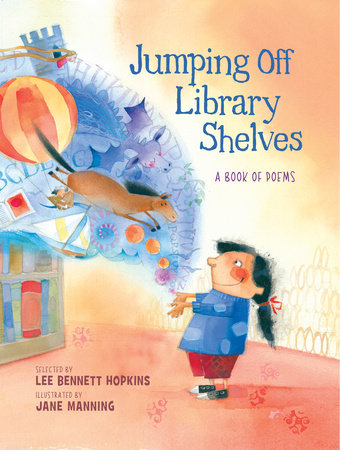
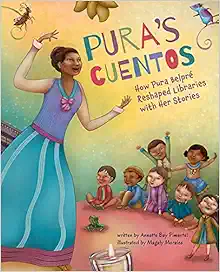




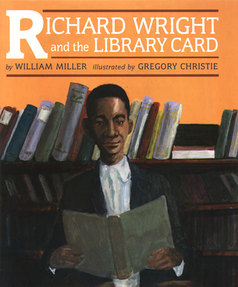
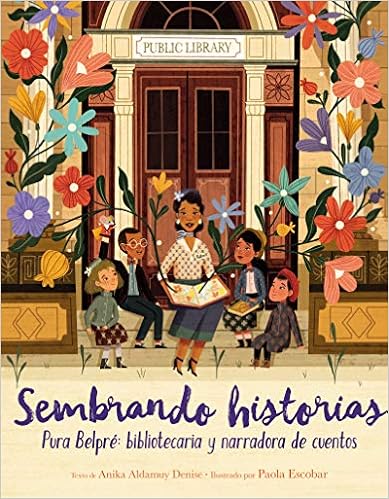
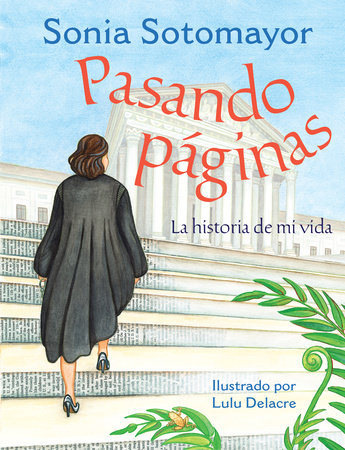









.jpg)